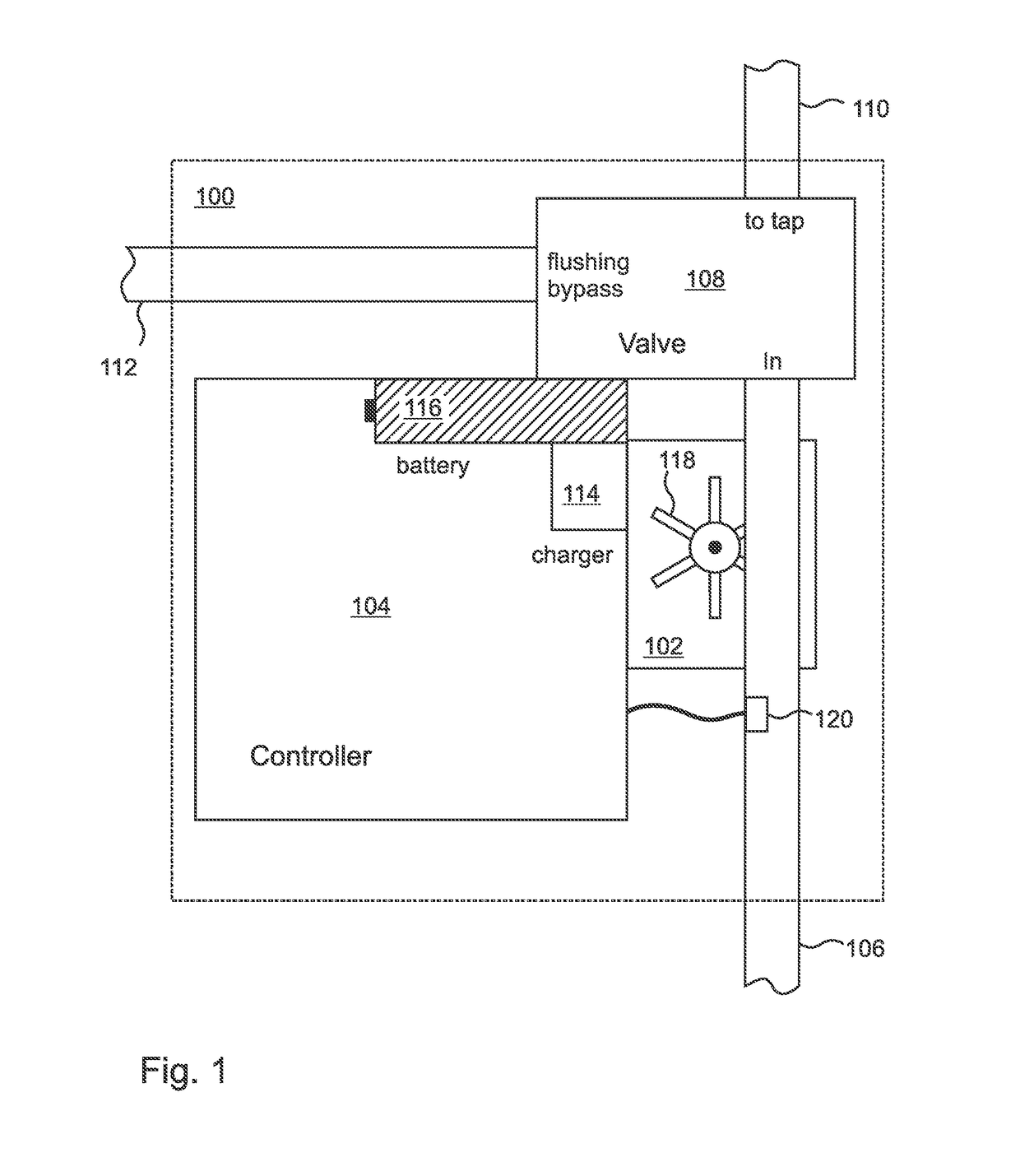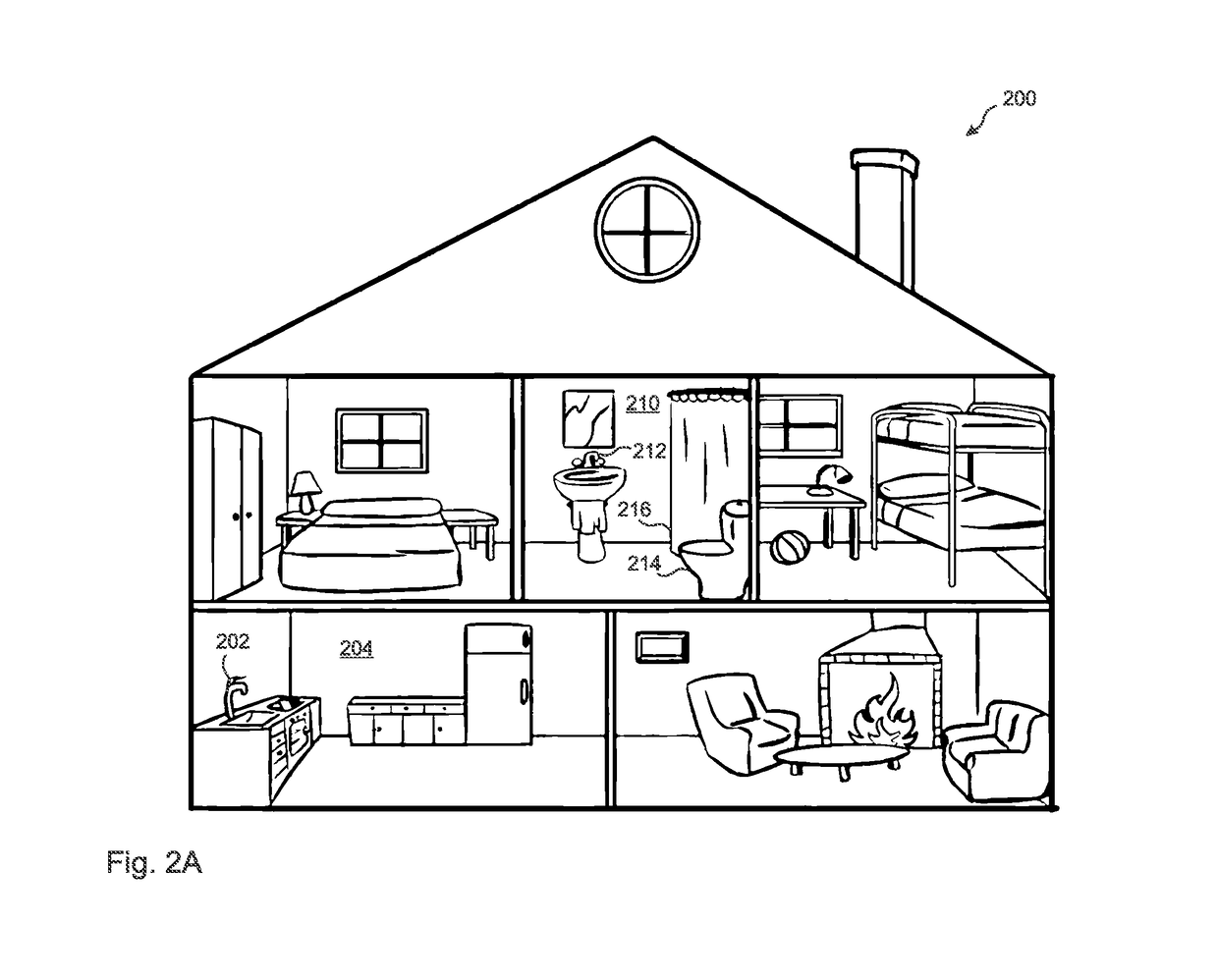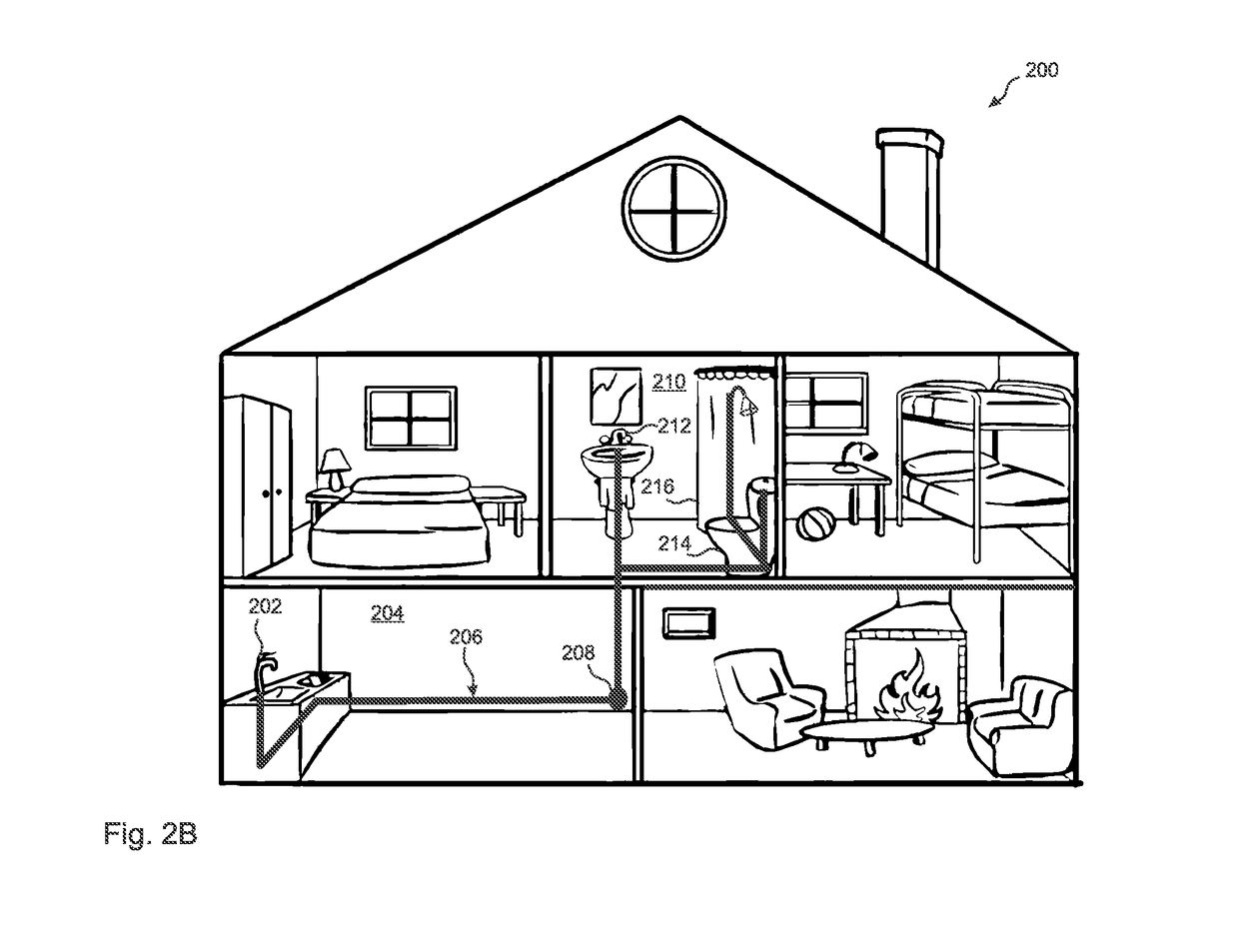Automatic, volumetric flushing apparatus for reducing contaminants in a plumbing system
- Summary
- Abstract
- Description
- Claims
- Application Information
AI Technical Summary
Benefits of technology
Problems solved by technology
Method used
Image
Examples
Embodiment Construction
[0066]The present invention is an automated water purging apparatus and method that can reduce ingestion by a user from a water tap of contaminants that accumulate in a plumbing system, without replacement of the plumbing system, without need for expensive filtration systems, and with minimum waste of water. With reference to FIG. 1, the disclosed purging apparatus 100 includes a flow sensor 102 that enables a controller 104 to calculate and monitor a volumetric flow of water through the apparatus 100. In embodiments, the purging apparatus is connected to the plumbing system in close proximity to the tap. In some of these embodiments, the drinking water flowing to the tap is diverted into in input 106 if the purging apparatus 100 and through the flow sensor 102, after which the water flows to a valve that determines whether the water flows out through a dispensing output pipe 110 to the tap, or through a bypass outlet pipe 112 to the drain that is associated with the tap, or to some...
PUM
 Login to View More
Login to View More Abstract
Description
Claims
Application Information
 Login to View More
Login to View More - R&D
- Intellectual Property
- Life Sciences
- Materials
- Tech Scout
- Unparalleled Data Quality
- Higher Quality Content
- 60% Fewer Hallucinations
Browse by: Latest US Patents, China's latest patents, Technical Efficacy Thesaurus, Application Domain, Technology Topic, Popular Technical Reports.
© 2025 PatSnap. All rights reserved.Legal|Privacy policy|Modern Slavery Act Transparency Statement|Sitemap|About US| Contact US: help@patsnap.com



